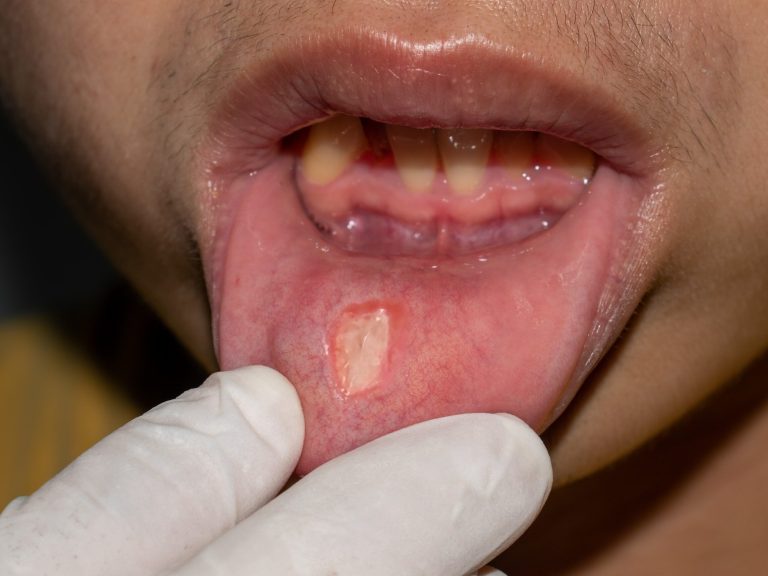Hepatic encephalopathy – types, causes, symptoms and treatment

Hepatic encephalopathy (HE) is most common in people with acute and chronic liver disease. There is, among others symptom of late cirrhosis and other diseases that lead to liver failure. Hepatic encephalopathy manifests itself as neuropsychiatric disorders and can lead to brain damage due to the accumulation of ammonia and other products of nitrogen metabolism in the blood.
- Hepatic encephalopathy – basic information
- Types of hepatic encephalopathy
- Factors causing hepatic encephalopathy
- Symptoms of hepatic encephalopathy
- Treatment of hepatic encephalopathy
Encephalopathy is the medical term used for diffuse or multifocal brain damage, which is associated with, among others, with trauma, cerebral hypoxia or caused by toxic substances. There are several types of congenital and acquired encephalopathies. One of the most commonly diagnosed is hepatic encephalopathy. In this case, the functioning of the nervous system is disturbed, because toxic substances from the transformation of nitrogen compounds are not removed from the body. Metabolic disorders are associated with progressive liver failure, which leads to, among others, alcoholic hepatitis, viral hepatitis, and non-alcoholic steatohepatitis. Other types of encephalopathy include:
-
post-traumatic encephalopathy,
-
hypertensive encephalopathy,
-
atherosclerotic encephalopathy,
-
post-inflammatory encephalopathy.
Hepatic encephalopathy belongs to the group of acquired metabolic encephalopathies, which are associated with the malfunctioning of organs and systems and poisoning with endogenous toxins, i.e. toxins produced in the course of metabolic changes. The toxins accumulating in the body destroy the nervous tissue, leading to various symptoms from the nervous system.
Hepatic encephalopathy – basic information
Hepatic encephalopathy is one of the complications of acute and chronic liver diseases and liver damage caused by toxic substances. Most often, hepatic encephalopathy is associated with cirrhosis – at the time of diagnosis of cirrhosis, symptoms of hepatic encephalopathy occur in 10-14% of patients. sick. Hepatic encephalopathy as one of the complications of cirrhosis occurs in about 30-40% of the population. sick. The annual risk of developing hepatic encephalopathy in patients with decompensated cirrhosis is approximately 2-20%. In advanced cirrhosis, hepatic encephalopathy is associated with approximately 50% one-year survival. Sometimes, hepatic encephalopathy is unrelated to liver disease. Symptoms typical of hepatic encephalopathy may also appear, for example, as a result of bleeding into the gastrointestinal tract.
Types of hepatic encephalopathy
Hepatic encephalopathy is classified into 5 grades according to the West Haven scale, based on the severity of symptoms and clinical severity. Patients may have overt encephalopathy and latent encephalopathy, which affects about 50% of patients. patients with liver cirrhosis. Latent encephalopathy is not detected by neurological examination. The diagnosis of latent hepatic encephalopathy requires neuropsychiatric testing. It is recommended to perform at least two neuropsychiatric tests, e.g. a simple paper-and-pencil test (PSE – portosystemic encephalopathy) and one of the following computer tests:
-
inhibition control test (ICT – inhibitors control test),
-
reaction time test (CRT – continuous reaction time),
-
SCAN test,
-
Stroop test.
Instead of computer tests, one neurophysiological test (visual test of the critical flicker frequency, CFF) or an EEG test may be performed.
Factors causing hepatic encephalopathy
The direct cause of the appearance of symptoms typical of hepatic encephalopathy are disorders in the work of the liver, which result in the accumulation of endogenous toxins in the body, e.g. ammonia and medium-chain fatty acids. The cause of disorders in the functioning of the central nervous system may be, for example, cirrhosis of the liver, which is accompanied by portal hypertension, as well as liver failure in the course of hepatitis B and C, and Reye’s syndrome. Other causes of hepatic encephalopathy include, for example, portosystemic collateral circulation without liver disease and large portosystemic vascular fistulas. Symptoms typical of hepatic encephalopathy can also occur as a result of infection or bleeding into the gastrointestinal tract.
Cirrhosis of the liver is the most common cause of poisoning the body with endogenous toxins. This disease, in most cases, is related to excessive consumption of alcohol (alcoholic encephalopathy). Liver damage, which leads to its fibrosis, is preceded by the symptoms of alcoholic hepatitis. There are episodic hepatic encephalopathy and chronic hepatic encephalopathy. Both an episode of hepatic encephalopathy and chronic encephalopathy always require specialized treatment.
Symptoms of hepatic encephalopathy
Symptoms of hepatic encephalopathy are neurological and psychiatric disorders of varying severity. The latent form of hepatic encephalopathy can cause disorders of consciousness that are difficult to diagnose, attention deficit disorder, mood changes, and problems with performing simple mathematical operations. Latent hepatic encephalopathy heralds the onset of overt hepatic encephalopathy, which can be prevented.
Symptoms that may indicate hepatic encephalopathy include:
-
various types of mental disorders,
-
sleep and wake rhythm disorders,
-
speech disorders,
-
motor function disorders,
-
disturbed orientation,
-
tantrums and outbursts of aggression
-
impaired concentration and attention,
-
delusions, slow speech.
Parkinson’s disease-like hand tremor is also a symptom of hepatic encephalopathy.
Treatment of hepatic encephalopathy
Before the diagnosis is made and the treatment of hepatic encephalopathy begins, it is necessary to exclude diseases that can cause similar symptoms. Treatment of hepatic encephalopathy includes the use of a special diet, antibiotics and drugs that accelerate the excretion of harmful metabolic products from the body.
Sources:
A. Szczeklik, Szczeklik’s internal medicine. Manual of internal medicine, Medycyna Praktyczna, Krakow 2013.
Marek Hartleb, Hepatic encephalopathy in patients with cirrhosis, Clinical Gastroenterology, vol. 5, no. 2–3, pp. 106-122, 2013.
A. Panasiuk, Hepatic encephalopathy, Wydawnictwo Lekarskie PZWL, Warsaw, 2016.






